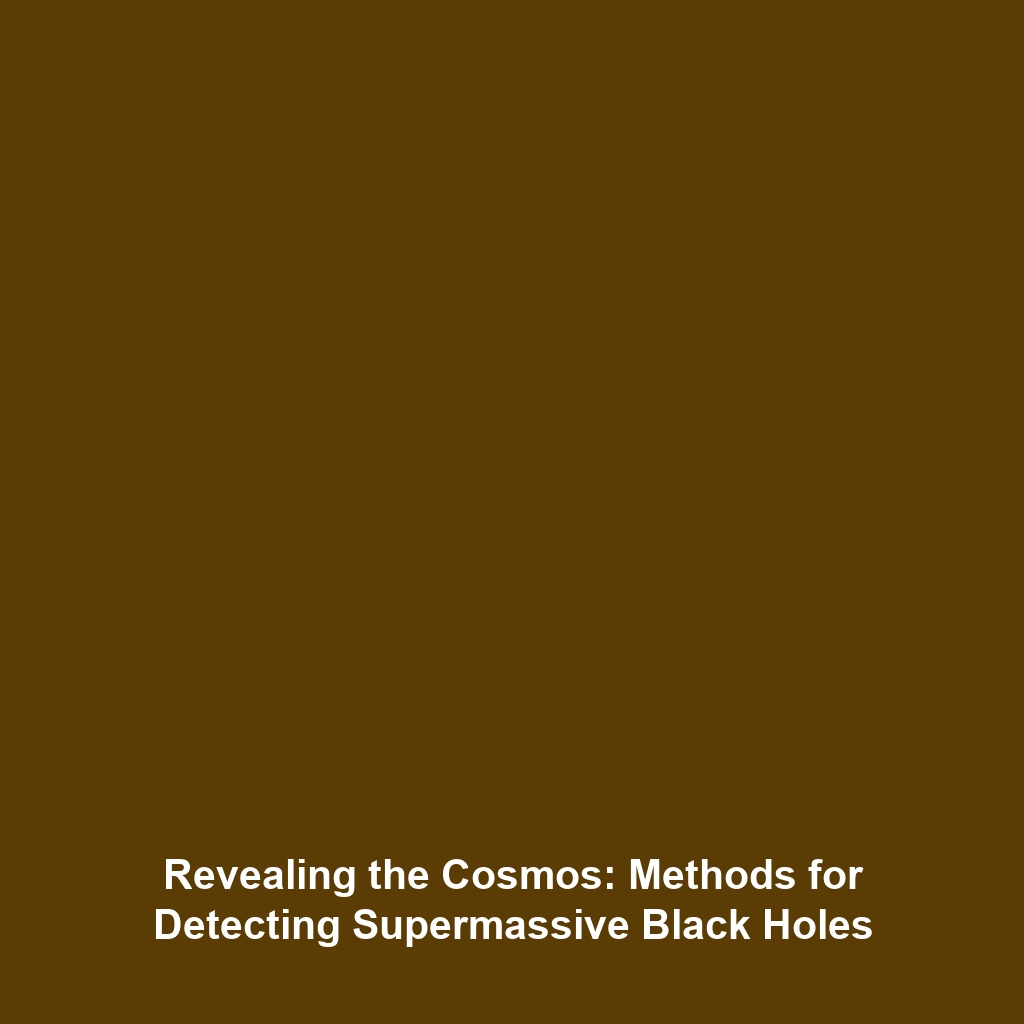Methods for Detecting Supermassive Black Holes: A Focus on Gravitational Lensing
Detecting supermassive black holes (SMBHs) is a crucial endeavor in astrophysics, revealing insights about galaxy formation and evolution. Among the various techniques employed, gravitational lensing stands out for its ability to uncover these cosmic giants. This article discusses methods for detecting supermassive black holes, particularly gravitational lensing, highlighting their significance in the broader context of black hole research.
Key Concepts
Understanding Black Holes
Black holes are regions in space where gravity is so strong that nothing, not even light, can escape. Supermassive black holes, found at the centers of galaxies, can have masses ranging from millions to billions of solar masses. Detecting these massive structures requires innovative methods given their elusive nature.
Gravitational Lensing
Gravitational lensing occurs when a massive object, like a supermassive black hole, bends the light from a distant object behind it. This effect can magnify and distort the image of the background object, allowing astronomers to infer the presence of a black hole without directly observing it. This method is critical for revealing the distribution of dark matter and understanding the mass of supermassive black holes.
Applications and Real-World Uses
Methods for detecting supermassive black holes, particularly gravitational lensing, have significant real-world applications in astronomy. Here are some notable uses:
- Galaxy Formation Studies: Understanding how SMBHs influence the dynamics of galaxies.
- Dark Matter Research: Gravitational lensing helps map the distribution of dark matter in the universe.
- Cosmological Measurements: SMBH detections can refine parameters for measuring the universe’s expansion.
Current Challenges
Despite advancements in methods for detecting supermassive black holes, researchers face numerous challenges:
- Limited Visibility: Gravitational lensing effects are subtle and can be difficult to detect.
- Complex Data Analysis: Large amounts of data from telescopes need intricate algorithms for interpretation.
- Contamination from Other Sources: Background objects may obscure the signals from SMBHs.
Future Research and Innovations
The future of detecting supermassive black holes lies in innovative technologies and research strategies. Upcoming advancements include:
- Next-Generation Telescopes: Projects like the James Webb Space Telescope are set to revolutionize our understanding of SMBHs.
- Advanced Algorithms: Machine learning techniques could improve the identification and analysis of gravitational lensing.
- Collaborative Observatories: Global collaborations will enhance data collection and sharing, enabling more comprehensive studies.
Conclusion
Methods for detecting supermassive black holes, especially through gravitational lensing, play a pivotal role in advancing our knowledge of astrophysics and the cosmos. Continued research and technological innovation are imperative for overcoming current challenges and unlocking further discoveries. For more information on black holes and related topics, explore our other articles linked below.
